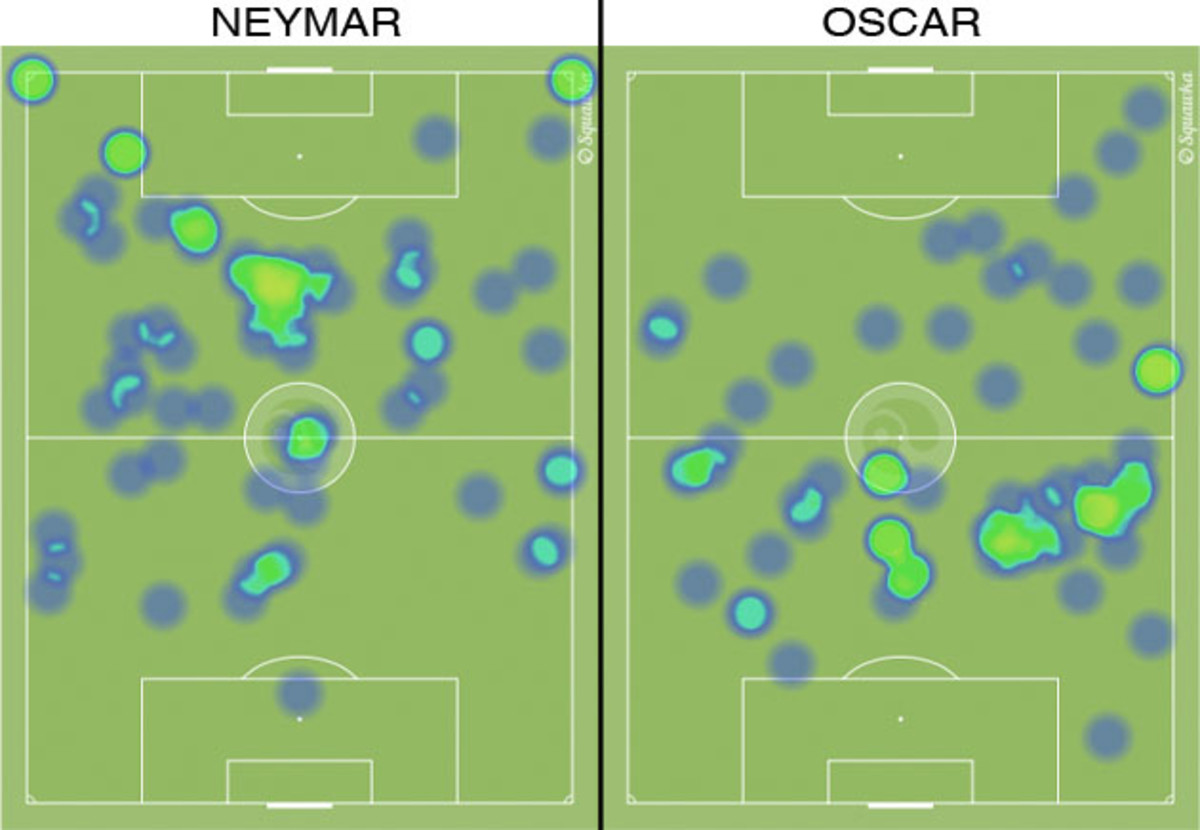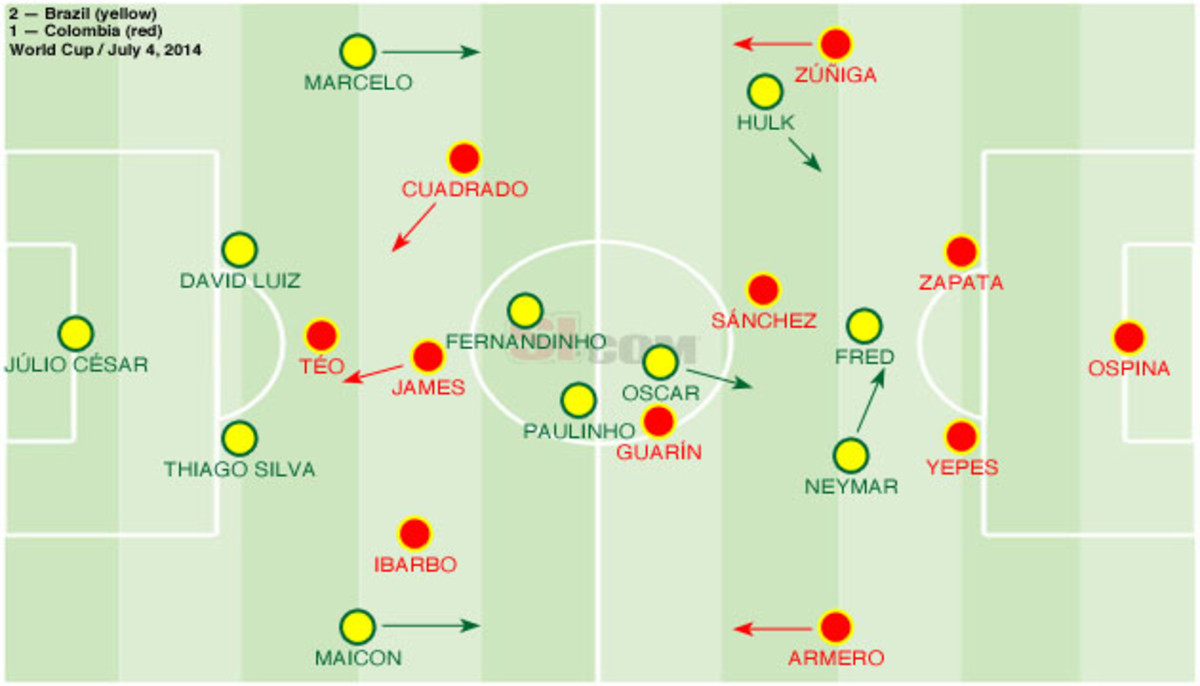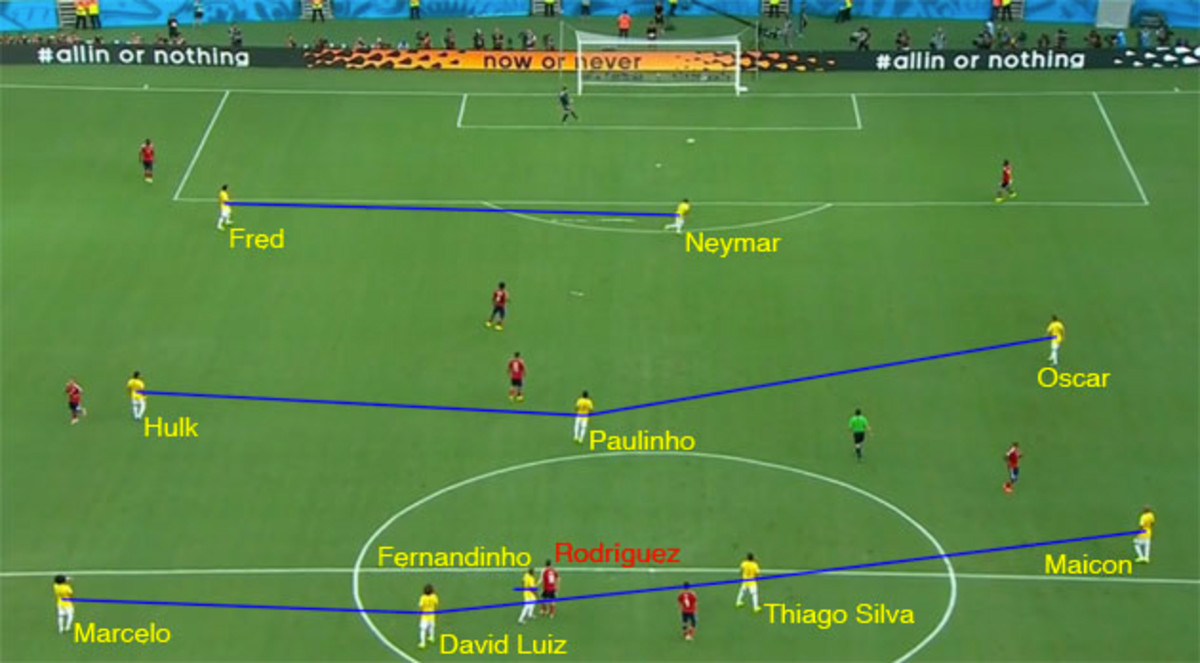Brazil's tactical, personnel options with Neymar out for the World Cup

Brazil's World Cup hopes took a major hit when Neymar fractured a vertebra late in the 2-1 quarterfinal win over Colombia on Friday. The physical nature of the match that Brazil helped cultivate caused the injury that knocked Neymar out for the remainder of the tournament.
Brazil played with a large element of risk in on Friday, and although it provided the desired result, it also backfired with Neymar's injury and Thiago Silva picking up his second yellow card, ruling him out of the semifinal. Defeating Germany without them will be a challenge for Brazil, as the keys to both ends of the field will be missing. Neymar creates in the attack, while Thiago Silva wins aerial duels and ground battles.
Brazil star Neymar out for remainder of World Cup with fractured vertebra
Thiago Silva’s absence puts more pressure on David Luiz defensively, meaning he likely won’t be able to maraud forward as he did against Colombia. His new partner will probably be Hernanes, who is more similar to Thiago Silva than Dante, another more attack-minded center back (although Dante does possess great knowledge of his German opponents given that he plays at Bayern Munich).
All of Brazil’s options in the back are capable of making an impact both in and out of possession, as modern center backs do more than win balls in the air, but a stronger defensive presence next to the free-spirited David Luiz would provide more security than a player similar to him.
As for the attack, Neymar created 12 goal-scoring opportunities and scored four of his own in five matches, and his absence provides a major dilemma going forward.

Against Colombia, manager Luiz Felipe Scolari set his team up to allow Neymar freedom as a central winger. Oscar’s positioning in the No. 10 space, but withdrawn deeper into midfield, facilitated Neymar’s drifting. James Rodríguez played a similar role for Colombia, although he started in the playmaking role and moved farther left with Adrian Ramos’ halftime introduction as a second striker.
Maicon provided a reliable presence in defense, stifling Rodríguez and left winger Víctor Ibarbo, periodically overlapping to fill in Neymar’s vacated space in attack, although Oscar mostly slid to the right when necessary.
Out of possession, Brazil forayed back into its physical game in a display reminiscent of the 2010 World Cup. Referee Carlos Velasco failed to curtail a rough match, and Brazil showed enough quality in its tactical game to render its physicality successful, unlike four years ago.

Selecao Survive: Three Thoughts on Brazil's 2-1 win over Colombia
Especially in the final match before caution accumulation disappears, Velasco should have done much more to impose his authority. Players didn’t fear the repercussions of foul play, leading to the highest foul count in the tournament; Brazil also won that battle, 31-23, with just two yellow cards each way.
Brazil reduced Rodríguez’s influence on the Colombian attack by cutting off passing lanes and not allowing him press forward when he received the ball in a deep position. Rodríguez was the primary recipient of Brazil’s physical game, suffering six fouls.
He was perhaps fortunate not to suffer a similar fate as Neymar, although the approach in the first half in particular was less on Rodríguez and more on keeping the ball away from him.

Colombia wasn’t given space to build out of the back. Brazil baited Los Cafeteros into a short initial pass, then immediately closed the space to force a long ball. Center backs David Luiz and Thiago Silva won the majority of aerial battles, and Fernandinho marked Rodríguez in the No. 10 space. Brazil’s typical defensive shape was 4-1-3-2, with Neymar staying high alongside Fred to deny the switched ball around the back, and the others squeezing to crowd the middle.
Watch: David Luiz consoles James Rodriguez, encourages crowd ovation
That created a high line of confrontation that Colombia managed to breach only sporadically to create numbers-up situations on the break, but David Luiz and Thiago Silva performed admirably in those individual moments, most notably thwarting a 4-on-2 counterattack in the 22nd minute.
Neymar also suffered four fouls (his injury would have been a fifth, but the referee played advantage), the most on his team. Colombia was able to give Brazil the same physical treatment it received, which is nothing new in a match featuring two CONMEBOL teams, but Velasco allowed it to get out of hand.
The Brazilian sensation will be a key loss, as he runs the show offensively for the Seleção. It might be time for Scolari to give Willian a start in the No. 10 role and slide Oscar to the left and Hulk back to his usual right-wing spot.
Willian provides more playmaking ability than Oscar, who was an adequate placeholder to allow Neymar freedom, but he doesn’t have as much incisiveness on the ball. Brazil’s biggest challenge will be finding a creator again, a problem that Scolari seemed to solve on Friday after a couple matches where the Seleção lacked a clear identity in attack.
The match against Colombia was a well-rounded performance involving all major players in attack, although Neymar was central to it. Without him, the creativity of the top four players as a whole will be highlighted against Germany, rather than expecting Neymar to get into dangerous areas.
